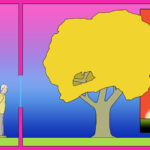In July, 2015, I went to a women’s retreat in Tampa and I was asked by a fellow attendee with decades more experience than I have to develop a personal philosophy of recovery. At 2 years and 9 months without alcohol – and continuing to be plagued by wishing to drink (with less frequency but too often to feel as if I can get on with my life) – my current philosophy of recovery is defined as “what can be done to keep me from drinking.”
Since I work with others challenged by addiction, I’ve included “using” to mean using external sources rather than internal sources to handle our inner experiences: illegal substances or legal substances not as prescribed or intended; overeating or undereating food; people, relationships, sex, gambling, shopping, porn and/or other activities or processes.
I have used “we” rather than “I” because, while I am responsible for providing my own 24-7 addictions recovery care, alone, without the help of others? I drink.
Working Hypotheses
- Pre-drinking or pre-using is a two-fold, heightened internal state: one of strong feelings perceived as unbearable – anxiety, fear, sorrow, pain, grief, loneliness, anger, rage, frustration, joy, agitation, boredom – and a sense of an inability to do anything about them – feeling helpless, hopeless, powerless, overwhelmed, useless, purposeless.
- Some kind of dynamic exists between the self, addiction, consciousness/awareness/attention, and that heightened feeling state that can result in unconscious drinking or using. This is where will power, determination, commitment, working towards goals, or working to avoid consequences can fail. This is why that heightened internal state must be protected against at all times, at all costs.
- The primary method we can use to help ease ourselves during heightened states of emotion is 1) become aware that we’re in the midst of that state, 2) calm ourselves just enough to be able to think and become aware of the judgmental statements we’re inwardly making to ourselves that are part of creating the state, 3) refute or transform those thoughts, then 4) further calm and reassure ourselves.
- Accumulated, unresolved sessions with heightened feelings and negative thinking (“racing thoughts,” “spinning thoughts”) lead to relapse. To counter this power, we strive to find and equip ourselves with individual ways that help us prevent, resolve, work through, counter, or release strong feelings.
- If we are experiencing strong feelings, most of the time it is not due to outside circumstances but due to inwardly brutalizing ourselves with judgmental self-talk, self-defeating beliefs, and/or pereceiving negative judgments from others, all of which are invoking shame. Brené Brown defines shame as “the intensely painful feeling or experience of believing that we are flawed and therefore unworthy of love and belonging – something we’ve experienced, done, or failed to do makes us unworthy of connection.” In contrast, guilt is “holding something we’ve done or failed to do up against our values and feeling psychological discomfort.” Brown offers this example from her TED talk: “Guilt: I’m sorry. I made a mistake. Shame: I’m sorry. I am a mistake.” (See Lifehacker on the difference between shame and guilt and why it matters.)
Tasks
- Wrest and liberate our true selves from the past. Address our family of origin issues.
- Monitor, tolerate, and manage our feelings and thoughts in the present.
- Occupy, engage and anchor our true selves in the present.
- Connect with others with common purposes to feel a sense of belonging.
- Nourish and grow relationships with ourselves and others.
- Practice radical self-care.*
- Move from “What is wrong with us?” to “How do we build better lives?”
- Take time to come to terms with the past, acknowledge personal strengths and limitations, develop our own systems of beliefs and values, and become self-accepting and self-appreciative.
Premises
- Accept the all-day, every-day nature of this endeavor.
- Accept the need for on-going physical and emotional self-care to maintain the endurance necessary for the continual effort required to abstain.
- Accept that healing ourselves will require initiating and maintaining healing relationships with ourselves and with supportive others. While no relationship is perfectly safe, we seek relationships with others with whom we feel worthy and receive enough support and enough safety most of the time.
- Accept that we are not all-knowing, accept that what we’re thinking may not take all knowledge and all views and all possibilities into account, and consult with others about what we’re thinking before we take action. If we don’t want to tell someone what we’re thinking of doing, that’s a sign that we need to talk with someone about it.
- Accept that we need help with what we can’t do for ourselves.
Moment-to-Moment Consciousness
- Pause.
- Become aware of feeling flooded with emotion – sometimes all we can do is name one of the “big four” feelings: mad, sad, glad, afraid – then reassure and calm ourselves just enough to unsoak the brain so we can think again. (Celebrate this mastery and self-control!)
- Catch every single self-critical thought. Transform self-critical self-talk into realistic, supportive self-talk. Examples: Negative self-talk: “I am a loser.” Transformed: “I am trying.”
- Catch every single awfulizing, castrophizing, worst-case-scenario-envisioning, self-alarming, self-terrorizing thought and challenge it. Example: “I am going to die from this!” Challenged: “Right now, I am okay.”
- From the dire state of believing we are helpless to keep ourselves from feeling overwhelmed, move ourselves to a safer, more objective, discerning place. Example: First thought: “I can’t bear this!” Second thought: “Wow, look how strongly I’m feeling about this. It’s okay. I’ve made it through this before. I’ll make it this time, too.”
On-Going Consciousness
- Talk about what we’re feeling, thinking and doing with multiple, supportive, trusted others to 1) discharge distress, 2) learn about ourselves as we self-disclose, 3) connect with others through mutual self-disclosure, 4) experience universality by learning of commonality, 5) experience the shame-healing power of non-judgmental acceptance by others.
- Be a supportive, trustworthy, non-advisory, non-judgmental listener and reciprocate the healing benefits of sharing.
- Recognize, anticipate, and plan for situations that might trigger drinking or using.
- Avoid or limit time with people who call us to our pasts, call us to question our value, or trigger shame.
- Avoid situations and places that might provide environmental cues, triggering a complex decision-making phenomenon over which we have little to no control. (Desensitization might be possible over time but may be impossible in the moment in early recovery.)
- Use imagination for creative thinking rather than anxious thinking, for fantasizing about recovery experiences rather than drinking or using experiences.
- Reach out to others to continue to build connections, networks, communities, and relationships.
- Continue to seek, create, and be open to invitations to new memberships in new or existing communities which are supportive and cohesive.
Consciousness of High Sensitivity
- Accept the possibility that we might have the characteristic beauties and burdens of being a highly sensitive person.
- Accept we may have strong, instant, persistent reactivity – rather than discerning responsiveness – to the words and actions of others and to stimuli in our environments.
- Accept we may have greater difficulty than others regulating our feelings and thoughts.
- Accept we experience things so strongly – body sensations, body functions, feelings, thoughts, situations, events, smoke alarm beep! perfume! – that we may think we don’t have the capacity to contain the experience within ourselves. What others may experience as physical and emotional discomfort we experience as physical and emotional pain. We have to find individual ways to handle this acuteness. Otherwise, it may become unbearable (see first bullet point) and lead to drinking or using.
- Be aware enough to put up boundaries between ourselves and difficult others to keep from “catching” their feelings in what could be, for us, risk of emotional “contagion.”
- Accept we may have the tendency to project or displace our feelings onto others to lighten the load. Example: Internal experience: “I’m feeling like such a loser. Is he/she thinking I’m a loser?” Outward expression to another: “Why are you such a loser?”
- With those in our inner circles, pre-plan and co-negotiate terms of engagement during heightened feelings states. If we slip and blame or accuse others of our own feelings and thoughts, apologize immediately to preserve personal integrity and to attempt to preserve the relationship.
Limitations
- In addition to substance use disorders, most people with addictions challenges struggle with the legacy of difficult early lives, trauma, and, frequently, acute levels of anxiety and/or depression. Many have co-occurring substance use disorders and mental illnesses. Luckily, what we can do for ourselves helps with all these conditions. But we have underlying reasons for why we drank or used. Addressing these reasons requires professional help.
- We need to acknowledge and accept what we cannot do for ourselves by ourselves. Individually, we cannot be our own counselors, psychiatrists, physicians, pharmacists, nutritionists, sponsors, support groups, therapy groups, or communities.
. . . . .
*Radical self-care includes extreme care and training for emotional and physical health, including nutrition, exercise, and sleep. We need to eat recovery-supporting foods in recovery-supporting amounts on a recovery-supporting schedule. We need to exercise and keep moving, i.e. avoid the couch unless meditating. We can ease our ways by accepting that sleep problems are normal for people in recovery and practice radical sleep hygiene to counteract the known challenges.
The opinions expressed here are mine and do not necessarily reflect the positions of my associates, clients, employers, friends or relatives.
The content of this post is for informational purposes only and is not a substitute for medical or professional advice. Consult a qualified health care professional for personalized medical and professional advice.


excellent!
You have a book here, dear Ann. I’m SO sorry to hear you were in Tampa and I missed you. Maybe next time? I have one observation. Where you change your self talk is what we do in HeartMath to change a negative emotional state to a positive one—in the power of the heart. When the moment turns to that self-talk you describe, pause. Breathe deeply into the heart’s space and remember a time you felt love, peace, calm, etc. For example, holding your kitty, or watching a sunset. Breathe the emotion of that scene deeply into your heart, breathing in and out around your heart’s space intentionally. The neurons in the heart will tell the brain you are now in a peaceful, calm or loving space, the brain will release good chemicals, and your whole body will change. With love and respect for all you are doing, dear friend. Terry